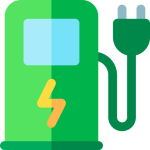Table of Contents
- Unlocking the Potential of Vehicle to Load Technology
- Exploring Practical Applications of V2L in Everyday Life
- Maximizing Efficiency: Tips for Integrating V2L into Your Energy Strategy
- Future Outlook on V2L Innovations and Sustainable Power Solutions
- Q&A
- To Conclude
Unlocking the Potential of vehicle to Load Technology
Imagine your electric vehicle not just as a mode of transport, but as a mobile power source, ready to fuel your everyday needs. Vehicle to Load technology enables EVs to become versatile energy hubs by safely transferring stored electricity to external devices. This shift transforms how we perceive energy consumption and storage – whether it’s powering your home during an outage, charging electronic devices at a remote campsite, or supporting emergency rescue operations with reliable backup power. The ability to harness your vehicle’s battery offers tremendous flexibility, reducing dependence on stationary grids and promoting sustainable energy use.
Beyond convenience, V2L also fosters environmental benefits by maximizing the utility of renewable energy stored in EV batteries. Here’s how V2L can revolutionize your energy management:
- Emergency Preparedness: Keep your essential appliances running during power failures.
- Off-Grid Adventures: Power camping equipment and outdoor gadgets effortlessly.
- Load Balancing: Distribute energy from your EV to balance home electricity demand.
| Use Case | Power Output | Typical Devices |
|---|---|---|
| Home Backup | 3.6 kW | Lights, fridge, Wi-Fi |
| Outdoor Camping | 1.5 kW | Portable fridge, speakers |
| emergency Response | 5 kW+ | medical devices, radios |
Exploring Practical Applications of V2L in Everyday Life
Imagine powering your home appliances during a blackout or taking your electric vehicle (EV) camping without lugging heavy generators. With V2L (Vehicle-to-Load) technology, these scenarios become everyday realities. Your EV transforms from a mode of transport into a versatile mobile power bank, capable of energizing everything from kitchen gadgets to personal electronics. this capability not only enhances convenience but also fosters energy independence, giving you peace of mind in unexpected situations.
Practical use cases span a variety of lifestyle needs, powered seamlessly by this innovative technology. Here’s how V2L is reshaping daily energy consumption:
- Emergency backup: Keep essential devices running during power outages.
- Outdoor activities: Power camping equipment, portable grills, or sound systems.
- Remote work setups: Charge laptops and monitors anywhere without traditional outlets.
- Tool operation: Run electric tools at construction or DIY sites without generators.
| Use case | Typical Power Draw | V2L suitability |
|---|---|---|
| Refrigerator (Home Backup) | 150W - 200W | Excellent (up to 24 hrs) |
| Camping Lights & Fans | 50W - 100W | Ideal (all night) |
| Power Drill (Tools) | 500W - 700W | Good (short bursts) |
| Electric Grill | 1200W – 1500W | Moderate (short duration) |
Maximizing Efficiency: Tips for Integrating V2L into Your Energy Strategy
To truly harness the potential of Vehicle-to-Load (V2L) technology, it’s essential to weave it seamlessly into your broader energy plan. Start by assessing your energy consumption patterns alongside your EV’s availability. Prioritizing the use of your vehicle’s stored power during peak demand hours or emergency events can reduce reliance on grid power and cut down utility costs.Smart scheduling and automation tools can help optimize when and how your EV discharges energy, ensuring minimal disruption to your driving needs while maximizing efficiency. Also, consider integrating solar panels or other renewable sources so that your EV battery charges sustainably, creating a closed-loop energy system that works effortlessly in your favor.
Implementing V2L requires a balance between output capacity and duration, which can be fine-tuned by understanding appliance power draw and setting limits accordingly. the table below outlines typical household devices and their approximate power requirements, assisting you in identifying which loads are ideal candidates for EV power support:
| Appliance | Typical Power Draw (W) | Estimated Runtime @ 5kWh |
|---|---|---|
| Refrigerator | 150 | ~33 hours |
| Laptop | 60 | ~83 hours |
| LED Lighting | 20 | ~250 hours |
| Electric Fan | 50 | ~100 hours |
To maximize efficiency, keep these strategies in mind:
- Monitor load priorities: connect only essential appliances during V2L usage to preserve battery life for critical needs.
- Utilize energy management apps: Many evs and third-party platforms offer monitoring and control to fine-tune energy flows.
- Plan for seasonal variations: Adjust V2L strategies based on heating or cooling demands to avoid unnecessary battery drain.
- Ensure proper maintainance: Keeping your EV battery healthy extends its capacity to serve as a stable power source.
future Outlook on V2L Innovations and Sustainable Power Solutions
As vehicle-to-load (V2L) technology evolves, it promises to revolutionize not only personal energy consumption but the broader landscape of sustainable power. Innovations are pushing beyond mere backup power functionality, expanding into grid interaction capabilities where electric vehicles dynamically feed energy back during peak demands or outages. This synergistic energy exchange could lead to smarter, more resilient communities powered by fleets of EVs acting as mobile energy hubs. Moreover, emerging advancements in battery chemistry and modular designs aim to enhance efficiency, dramatically reducing energy loss during transfer and extending the lifecycle of these multifaceted power sources.
The road ahead also features enterprising collaborations between automakers, utility providers, and tech startups, fostering an ecosystem that supports renewable integration and decentralized energy models. Key trends to watch include:
- Bi-directional charging stations enabling seamless V2L and V2G (vehicle-to-grid) functionalities
- Smart energy management systems utilizing AI to optimize power flow depending on user needs and grid status
- Enhanced portability with compact adapters and worldwide connectors, making V2L accessible in diverse environments
| Feature | Current State | Future potential |
|---|---|---|
| Energy Transfer Efficiency | ~85% | 95%+ |
| Battery Lifespan impact | Moderate | Minimal |
| Integration with Smart Grids | Limited | Widespread |
Q&A
Q&A: V2L Power – How EVs Are Transforming Your Energy Needs
Q1: What exactly is V2L power?
A1: V2L, or Vehicle-to-Load, refers to the technology that allows electric vehicles (EVs) to supply electrical power from their batteries to external devices. Think of your EV as a giant, mobile power bank that can charge your gadgets, power your home appliances, or even assist in emergency situations.
Q2: How does V2L technology work in practise?
A2: At its core, V2L uses the EV’s onboard inverter and charging port to reverse the usual flow of electricity. Instead of pulling energy from the grid, the vehicle pushes stored battery power outward. With a compatible connector, you can plug in devices directly to your car and draw electricity just as you would from a household outlet.
Q3: What are some real-world applications of V2L?
A3: V2L has a range of exciting applications. Such as, it can power tools on a job site, keep home appliances running during power outages, or enable outdoor activities like camping without reliance on traditional generators. It’s a versatile solution that introduces flexibility to how and where we use electricity.
Q4: Is V2L technology widely available in evs today?
A4: While still emerging, V2L is becoming more common as automakers recognize its potential. Certain EV models already support V2L capability, and as infrastructure and technology improve, it’s expected to become a standard feature in future electric vehicles.
Q5: What advantages does V2L offer over traditional power backup systems?
A5: Unlike stationary generators, V2L-powered EVs are mobile and multipurpose. They don’t rely on fossil fuels, reducing emissions and noise. Additionally,as your car’s battery is regularly charged from the grid or renewable energy,it can provide clean power when you need it most.
Q6: Are there limitations or concerns with V2L use?
A6: The primary limitation is battery capacity-using your EV to power external devices drains the vehicle’s charge, possibly reducing driving range. Furthermore, the output power might be limited compared to larger generators, so it’s best suited for low to moderate energy needs.still, careful management and future advances in battery tech can mitigate these issues.
Q7: How might V2L transform our relationship with energy in the future?
A7: V2L blurs the line between transportation and energy storage, transforming EVs into key players in decentralized energy systems. As homes become more energy-conscious and grids adopt smarter technologies, your car could become an active participant-storing, sharing, and supplying power-offering greater resilience, efficiency, and freedom.
Q8: What should consumers consider before using V2L?
A8: Consumers should understand their energy needs,the EV’s V2L capabilities,and battery management. Using V2L wisely means balancing power supply with driving requirements.It’s also helpful to consider compatibility with your devices and whether your EV model supports V2L charging modes.
Q9: Can V2L contribute to sustainability goals?
A9: Absolutely. by maximizing the use of stored electric energy and reducing reliance on fossil-fuel generators, V2L supports cleaner energy use. Combined with renewable grid power, it helps decrease carbon footprints and promotes efficient utilization of resources.
V2L power is more than a feature-it’s a glimpse into an electrified future where your vehicle is not just a means of travel but a dynamic energy partner. Whether for convenience, emergency preparedness, or sustainability, V2L is setting new currents in how we power our lives.
To Conclude
As the lines between transportation and energy continue to blur, vehicle-to-Load (V2L) technology stands at the forefront of this transformative journey. EVs are no longer just modes of travel; they are evolving into versatile power hubs that can energize our homes, workplaces, and adventures. While challenges remain, the promise of V2L power hints at a future where our electric vehicles do more than move us-they empower us in every sense. Embracing this innovation may well redefine how we think about energy itself,turning onc-dormant batteries into vital lifelines in an increasingly electrified world.
EV Evolution is the leading online platform dedicated to Australian electric vehicle owners and enthusiasts. We foster a vibrant community, delivering essential EV news and insights, and enhancing user engagement through our innovative, AI-powered chatbot for dynamic discussions. Our mission is to empower Australian electric vehicle owners and enthusiasts by fostering a vibrant, AI-driven online community that connects, informs, and advances the nation’s electric vehicle landscape.




